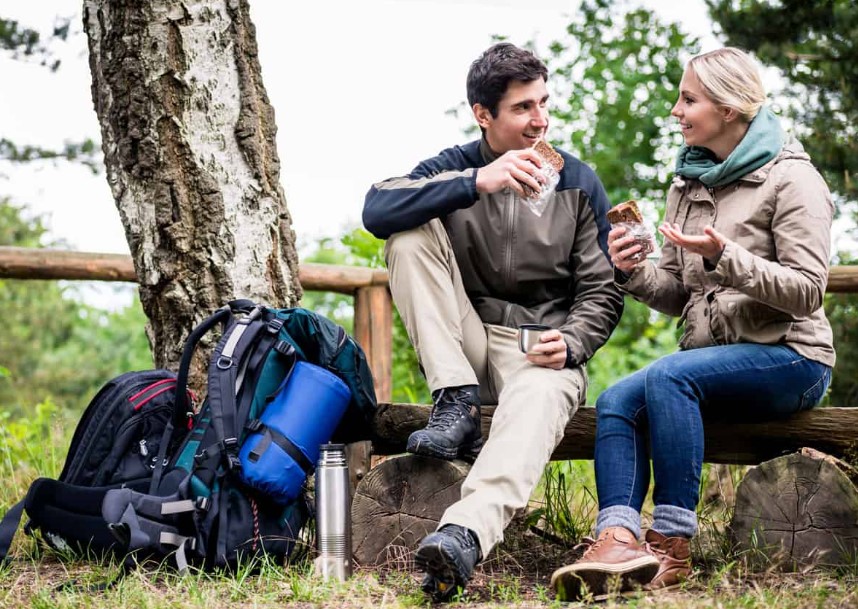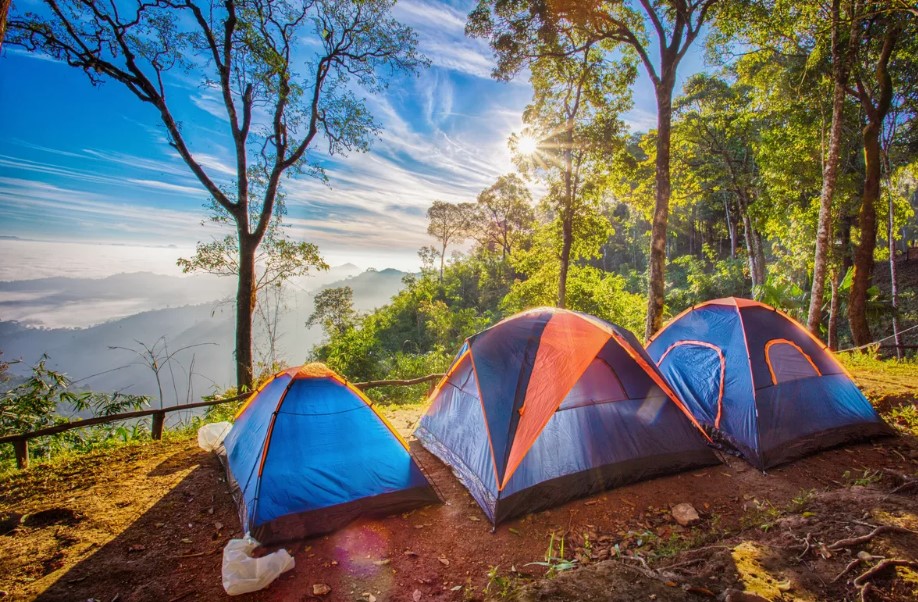
If you’re an avid hiker or an outdoor lover, thru-hiking the Appalachian Trail might be on your bucket list. The trail spans 2,200 miles through the Appalachian Mountain range in the eastern United States. It cuts through 14 states and through numerous forests, national parks, and recreational areas. For the most part, it doesn’t pass through developed towns or cities but there are a few small communities along the trail.
There’s no denying that hiking the trail is mentally and physically challenging for even the most experienced of hikers. Hiking the trail is worth it though. You’ll meet new people, see beautiful scenery, get to go on adventures, experience off-the-grid living, and grow as a person. If you’ve decided to thru-hike the trail, you’ll want to be prepared as possible.
Page Contents
Thru-Hiking vs Section Hiking
One of the first decisions you’ll want to make is if you really want to thru-hike the trail or if you would prefer to section hike.
Thru-hiking is when you tackle the entire trail in one trip without taking any significant breaks. This means you don’t return home at any point during your hike, instead, you camp on the trail or rent a room near the trail. A true thru-hiking experience on the trail can take anywhere between 4 to 7 months. You have to meet daily mileage goals in order to hike the trail before winter sets in.
Section hiking is much more casual. You go on several different trips and hike sections of the trail each time. This allows you to return home and recharge between each section. There’s no time frame or need to track daily mileage. You also don’t have to hike sections of the trail in order. If you’re not sure you’re ready to thru-hike, going on a section hike is a good starting point.
How to prepare physically and mentally
Preparing for your hike can be overwhelming. In addition to the logistical planning, you need to be physically and mentally fit.

The first few weeks will be physically tough no matter how prepared you are, but exercising in the weeks leading up to your hike helps. Go on a few smaller hikes with your hiking backpack on. If you can’t go on regular hikes, carry your backpack with you on a walk around your neighborhood.
Mentally, you’ll want to set goals for yourself to remind yourself why you want to do this. Remember those goals when times get tough on the trails. You should also do as much research as possible to know what to expect and how to deal with any challenges. For example, you might want to research first-aid tips so you’ll know what to do if you get injured.
When and where to hike
Most hikers want to avoid hiking the trail during January or February because of harsh weather conditions. You can expect to experience several different seasons while hiking since you’ll be on the trail for 4 to 7 months. The best month to start your journey will vary depending on your starting location.
Northbound hikers start at Springer Mountain and end at Mount Katahdin. This is the most popular route and the trails might be crowded. You’ll want to start your hike in late March or early April. Starting at Springer Mountain tends to be physically easier, but you can still expect to experience some freezing weather during the first few months of your hike.
Southbound hikers start at Mount Katahdin and end at Springer Mountain. This route is usually less crowded. Mount Katahdin provides difficult terrain, so it can be challenging for less experienced hikers. You’ll want to start your hike in late June or early July, but be prepared for heavy rain and muddy conditions.
What you need to bring
Deciding what you need for your thru-hike can be overwhelming and fun at the same time. While you’re probably aware of some of the essentials, long-distance hiking is a lot different than taking a day hike.

While you can purchase smaller pieces of gear or replenish your food supplies while on the trail, there are a few really important pieces of gear you’ll want to invest in. You’ll want a backpack that fits you and that holds all your gear. You’ll want a sleeping pad, sleeping bag, and a tent. And you’ll want a good pair of hiking boots. It’s easy to replenish smaller gear such as a knife or a first aid kit while on the trail. Even though you’ll be in the wilderness while on the trail, there are usually towns within a reasonable walking distance off of the trail.
You’ll also want to have at least $1000USD per each month you’re on the trail for emergencies and to replenish supplies.
Camping on the trail
Most people opt to camp on the trail instead of venturing into a nearby town to rent a room. This helps cut down on costs during your trip. There are campsites along the trail that allow you to pitch a tent. Rules regarding campsites will vary depending on the state, but you’ll generally be expected to use an existing campsite instead of clearing new ground. There are also simple wooden shelters along the trails that are near water sources and often have additional amenities such as fire pits and outhouses.
Some groups also opt for traveling with an RV. One member of the group stays with the RV at a campsite while other members of the group hike. The person with the RV then travels to the next RV campsite and waits for the rest of the group.
In summary
Thru-hiking can be an enjoyable and rewarding experience, but it requires a lot of preparation. You need to carefully research ahead of time, plan your timeframe, and figure out what gear you need to bring. The information above is really just the tip of the iceberg. If you’re serious about thru-hiking, there are a number of books and articles out there that can help you plan your trip. The more prepared you are, the more enjoyable your experience will be.








